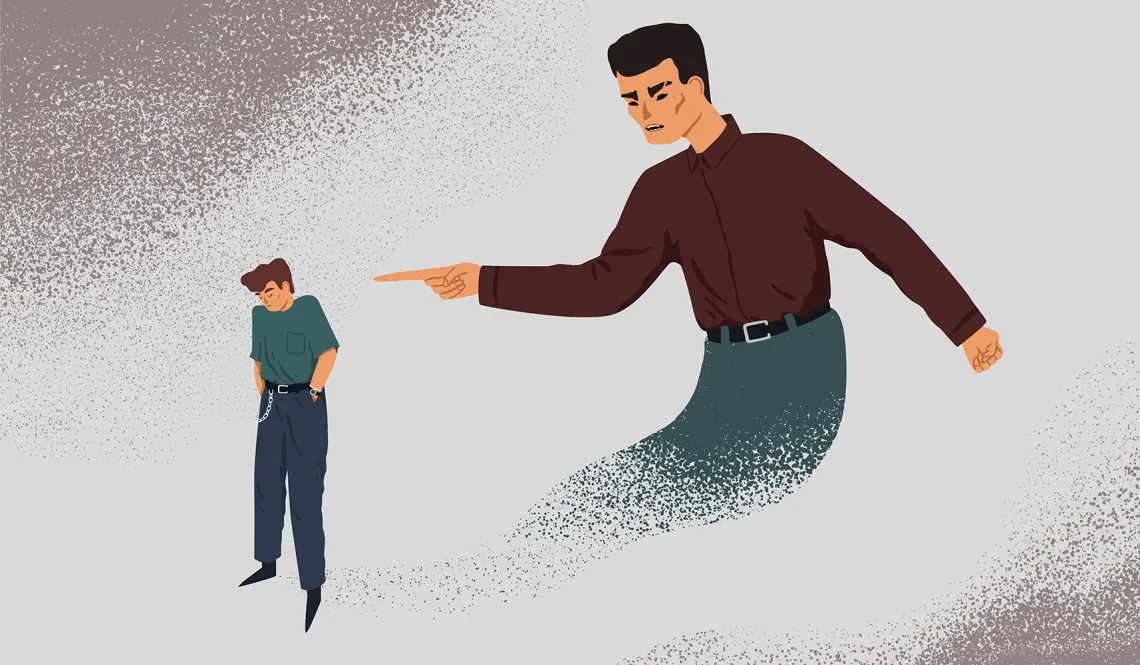Social Distancing and Our Need to be Right: Notes from a Social Psychologist
Americans are having contentious conversations about whether or not to stay home. We asked UArizona social psychologist Daniel Sullivan what our decisions, disagreements, and judgments of each other during the pandemic reveal about human nature.

“Social distancing” is a phrase now penetrating the national conversation as well as our collective consciousness. Strongly urged by medical experts during the COVID-19 outbreak, social distancing means deliberately increasing the physical space between people to avoid spreading illness. Staying at least six feet away from other people lessens your chances of catching—and subsequently, spreading—the virus.

Daniel Sullivan is an associate professor of social psychology in the University of Arizona’s College of Science. Sullivan is also the director of the Cultural-Existential Psychology Laboratory, where he and his team study how culture influences experience. In response to COVID-19, Sullivan and members of his lab are writing a journal manuscript focused on societal responses to uncertainty.
We asked him to discuss the social psychology behind distancing ourselves and what our decisions—and our attitudes—during this pandemic say about the complexity of human nature.
Generally speaking, how would you say people are feeling right now?
Humans have evolved to be very sensitive to illnesses, contamination, and contagion, and these threats have certain unique properties. They are relatively “invisible” and ambiguous threats. We can’t see them directly, we don’t know when and if we will get infected, and, until we actually know someone who is infected, it can be hard to visualize what the actual extent of the suffering will be. On top of the standard uncertainties that come with the threat of disease, in this case, the rapid time-course of the pandemic is totally unprecedented—at least in most of our lifetimes.
So, people are dealing with a lot of uncertainty. All of this uncertainty—especially when we have to experience it again every day, perhaps multiple times a day as we receive new information—can be very upsetting.
Can you talk about how this sudden, sweeping change in lifestyle might be affecting people?
We are all suddenly in a very paradoxical situation. We’re trying to engage in this major act of collective solidarity (sacrificing convenience and even financial well-being for the good of relatively few people whom we don’t personally know) by way of behaviors that are very individualistic and isolating (staying in our homes and not having face-to-face interactions with others). The goal, group solidarity, and the behavior to reach the goal, isolating yourself, don’t match up in a logical way. It’s tough to wrap our minds around.
We tend to want to respond to chronic uncertainty with clear, decisive action; it provides a sense of control. In this case, because those actions often conflict with our normal behavior, we experience what psychologists call “cognitive dissonance.” Staying at home every day and not going to work conflicts with behavior we’ve been socialized to practice. On the other hand, going out in public means you’re ignoring social distancing messages, and it’s also a source of cognitive conflict.
Everyone is experiencing this dissonance between what we’re doing, on the one hand, and what we’re being told to do or what we’d normally do, on the other.
On social media, it seems like everyone is fighting to be “right” about their opinion on and approach to social distancing. Why?
In many ways, this situation is a recipe for disaster in interpersonal and broader societal relationships.
Research shows that online interaction can be moralizing, polarizing, and overly aggressive. I think people are responding to this mass moment of cognitive dissonance, in part, by proselytizing or scapegoating others online.
This is an unfolding and uncertain situation. Many of us, to convince ourselves that we’re making the “right” decision despite the uncertainty, are not just stopping at making the decision for ourselves, but are going online and trying to convince everyone that it’s the right decision as well. People feel most sure their attitude is correct when they are able to persuade someone else that it is.
Why is the national conversation about what to do and what not to do right now becoming increasingly polarized and judgmental?
As humans, our responses to feelings of uncertainty and lack of control often involve trying to simplify complex problems, boiling them down to a few actions that an individual can take, and to a few people or agents that can be blamed in a moralistic way for the problem. We typically call this “scapegoating.”
In the case of the COVID-19 outbreak, I think we are seeing two broad patterns of response in people that follow these lines of simplification and attempt at compensatory control, but in different ways. These patterns then play out in the discourse.
One pattern can be seen among people who are deeply concerned about the disease and see it as a major threat. These people have latched on to certain behaviors and interpretations – whether it’s wearing face masks, excessively sanitizing, practicing social distancing, or hoarding household goods—to make them feel that they and their loved ones will be safe. They also can scapegoat certain groups of people—“selfish millennials,” for example—so that they can blame someone for the problem of the pandemic and feel as if they understand it.
Another pattern can be seen in people who are trying to deny that there is even a problem. They continue to go out in public almost as if to convince themselves that the threat isn’t real. This camp can scapegoat other groups for either causing the problem—calling COVID-19 “the Chinese virus,” for example—or for creating “hype” around a problem they don’t believe exists.
When it comes to underlying psychological motivation, these two patterns of response are perhaps more similar than we might imagine: In both cases, people are trying to regain a sense of control.

